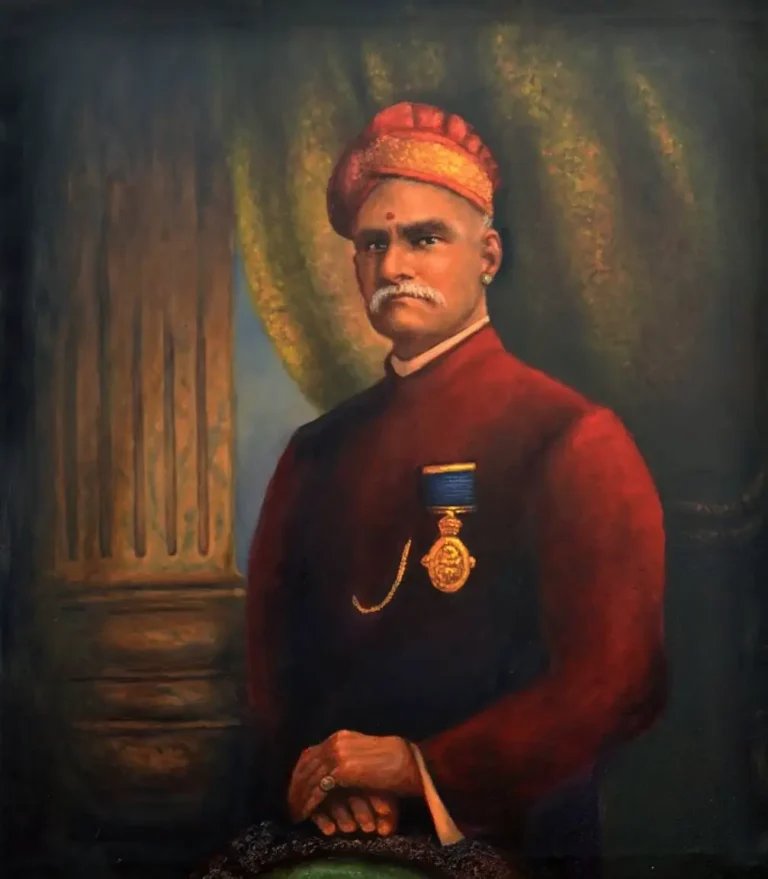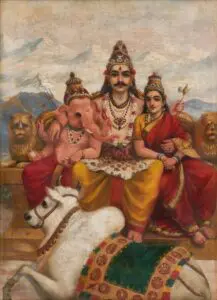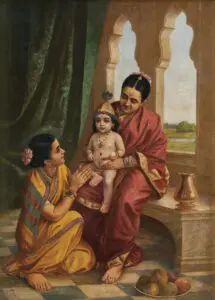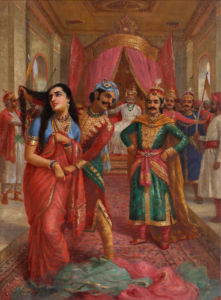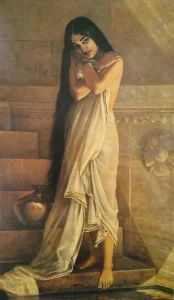Varaha Avatar
Raja Ravi Varma's Varaha Avatar is a captivating depiction of the Hindu deity Vishnu in his boar form, rescuing the earth goddess Bhudevi from the ocean depths. The artwork radiates an aura of strength and divinity, emphasizing the importance of the earth (often symbolized as a globe) in Indian culture. Varma's unique style merges narrative depth with intricate details, making this piece a seminal work that still resonates with audiences today. The artist skillfully illustrates the cultural and geographical aspects of India within the painting, making it both a spiritual and national emblem.
Late 19th Century
About the Artwork
The Varaha Avatar artwork narrates a vital episode from Hindu mythology where Vishnu takes the form of a boar, Varaha, to rescue the earth from Hiranyaksha, a demon who submerged it in the cosmic ocean. This tale is not just a testament to the triumph of good over evil but also underscores the deep connection between the divine and the earth in Hindu beliefs. Raja Ravi Varma's interpretation emphasizes the physicality and majesty of Varaha, capturing the moment of rescue and elevating the earth through divine intervention. With its intricate details and rich symbolism, the painting becomes a bridge between mythology and the viewer, inviting them into a narrative that is both ancient and timeless.
Did You Know
The Varaha Avatar not only illustrates a crucial moment in Hindu mythology but it also symbolizes the unity of mankind with nature, reinforcing the reverence for the earth in Indian culture.
Raja Ravi Varma’s use of oleograph prints allowed for mass distribution of his works, making Varaha Avatar widely accessible and cementing it as an essential part of Indian visual culture.
Varma’s blend of traditional Indian themes with European techniques marked a turning point in Indian art, paving the way for future artists and influencing a generation in their exploration of cultural identity.




